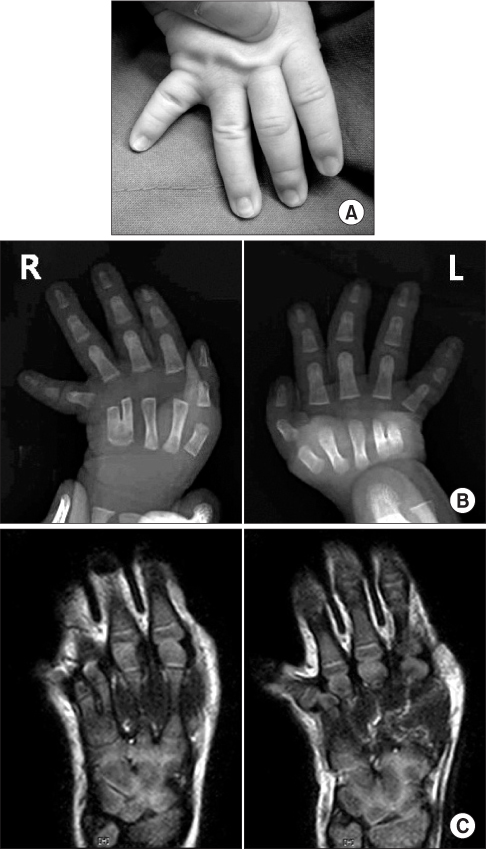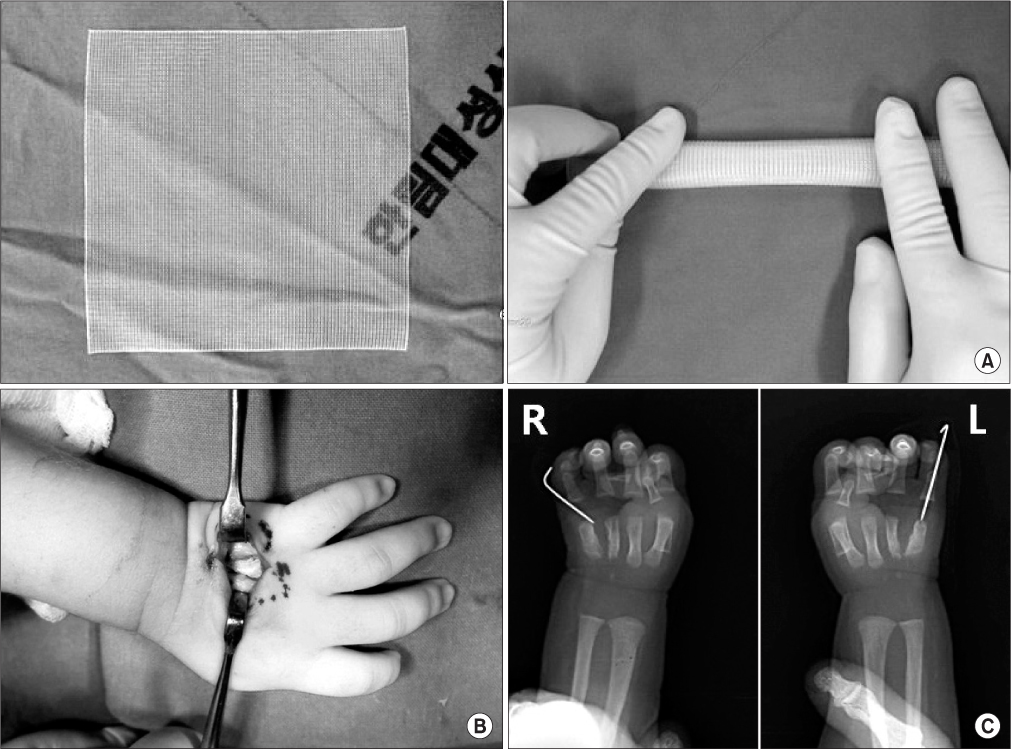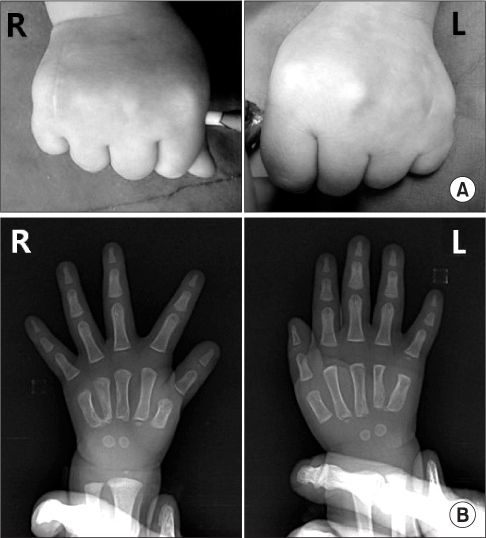J Korean Orthop Assoc.
2013 Aug;48(4):314-318.
Correction of Congenital Metacarpal Synostosis with Polypropylene Mesh as an Interpositional Material
- Affiliations
-
- 1Department of Orthopedic Surgery, Hallym University Sacred Heart Hospital, Anyang, Korea. pedoskwak@hallym.or.kr
Abstract
- Metacarpal synostosis is an uncommon congenital hand malformation characterized by the coalescence of two or more adjacent metacarpals. Patients visit the hospital due to abduction deformity, which is usually a mild deformity or a minor functional deficit. This is one of the reasons why the patient goes to the hospital late and foregoes proper management with early detection and treatment. A number of surgical procedures ranging from simple to complex have been employed for treatment of this deformity. We describe our experience with a longitudinal osteotomy, realignment of component metacarpals with the metacarpophalangeal joint, and interposition of a non-absorbable polypropylene mesh used for inguinal hernia for correction of the abducted deformity and prevention of recurrence of synostosis while minimizing morbidity.
Keyword
MeSH Terms
Figure
Reference
-
1. Miura T. Congenital synostosis between the fourth and fifth metacarpal bones. J Hand Surg Am. 1988; 13:83–88.
Article2. Buck-Gramcko D, Wood VE. The treatment of metacarpal synostosis. J Hand Surg Am. 1993; 18:565–581.
Article3. Foucher G, Navarro R, Medina J, Khouri RK. Metacarpal synostosis: a simple classification and a new treatment technique. Plast Reconstr Surg. 2001; 108:1225–1231.
Article4. Kawabata H, Yasui N, Che YH, Hirooka A. Treatment for congenital synostosis of the fourth and fifth metacarpals with the hemicallotasis technique. Plast Reconstr Surg. 1997; 99:2061–2065.
Article5. Iwasawa M, Hayashi R, Matsuo K, Hirose T. The use of costal cartilage as a spacer in the treatment of congenital metacarpal fusion. Eur J Plast Surg. 1998; 11:138–140.
Article6. Lee KS, Park JW, Wie DG, Han SS. The surgical treatment of metacarpal synostosis. J Korean Soc Surg Hand. 1997; 2:363–368.7. Chung DW, Kim KT. Surgical management of congenital fourth and fifth metacarpal synostosis. J Korean Soc Surg Hand. 1999; 4:94–101.8. Gottschalk HP, Bednar MS, Moor M, Light TR. Metacarpal synostosis: treatment with a longitudinal osteotomy and bone graft substitute interposition. J Hand Surg Am. 2012; 37:2074–2081.
Article9. Jianmongkol S, Thammaroj T, Vipulakorn K. Congenital metacarpal synostosis treated by double bone blocks technique: a case report from Thailand. Hand Surg. 2005; 10:131–134.
Article10. Horii E, Miura T, Nakamura R, Nakao E, Kato H. Surgical treatment of congenital metacarpal synostosis of the ring and little fingers. J Hand Surg Br. 1998; 23:691–694.
Article
- Full Text Links
- Actions
-
Cited
- CITED
-
- Close
- Share
- Similar articles
-
- Treatment of the Bilateral Congenital Radio - Ulnar Synostosis: A Case Report
- A Report of congenital Radio - Ulnar Synostosis Occurred in Brothers: One Case Associated with Klinefelter's Syndrome
- The Experience of Cystocele Repair with Monofilament polypropylene Mesh
- Reconstruction of a high-energy penetrating injury from the abdomen to the sacral area using a latissimus dorsi free flap with monofilament polypropylene mesh and pedicled flap rotation: a case report
- Congenital Distal Tibio-fibular Synostosis: Case Report




